The annual Republic Day Parade is one of the most awaited events in the country. The parade displays India’s rich cultural heritage & its military prowess. But what exactly happens at the Republic Day parade? Here is a detailed explainer.
26 January is celebrated with great patriotic fervour across the country with flag hoisting ceremonies, parades by armed forces, and children. The celebrations are the most magnificent in Rajpath in the national capital, Delhi. India’s rich cultural diversity and military prowess are displayed with grandeur on this day. As India gears up to celebrate the 72nd Republic Day, we take a look at the history and significance of the day & also understand how this is traditionally celebrated in the national capital.
India became an independent nation on 15 August 1947. Two weeks later, the Constituent Assembly set up a Drafting Committee under the Chairmanship of Dr. B R Ambedkar for drafting a permanent Constitution for Independent India. Finally, after almost three years, the Constituent Assembly completed drafting the Constitution.

Constitution of India came into effect on 26 January 1950
The Constitution was adopted by the Constituent Assembly on 26 November 1949 and came into force on 26 January 1950 with Dr. Rajendra Prasad unfurling the National Flag after a salute of 21 guns declaring India a Sovereign, Democratic and Republic state.
It was on the same day, 26 January, in 1930 that the Indian Tricolour Flag was first unfurled in Lahore by Pt. Jawaharlal Nehru, and the declaration of an independent (Purna Swaraj) Indian National Congress was made. Hindi was declared an official language of the Union Government on 26 January 1965.
21 gun salute is presented, and the President of India unfurls the National Flag
To commemorate this day, on 26 January every year, a series of events are conducted in the national capital, New Delhi. First, the Prime Minister of India lays a wreath at the Amar Jawan Jyothi at the India Gate to pay tribute to the soldiers who sacrificed their lives for the country. Following this, the dignitaries arrive at the venue in Rajpath.
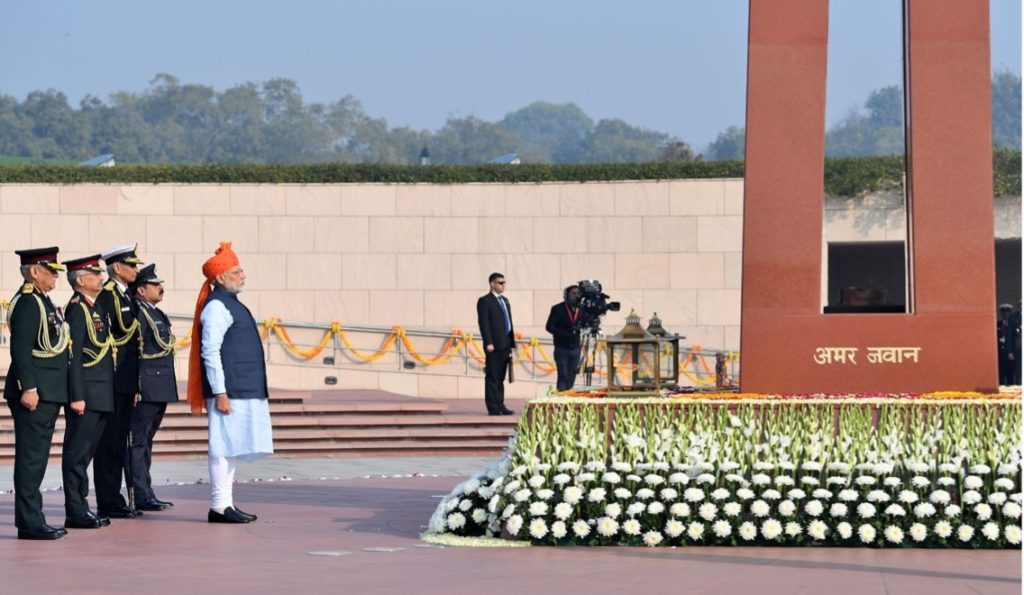
The event begins with a 21 gun salute and the President of India unfurls the National Flag, and the National Anthem is played by. For Independence Day, it is the Prime Minister who unfurls the National Flag at Red Fort.
Awards are presented for bravery
The President then distributes the Ashok Chakra series of awards. The Ashok Chakra is India’s highest peacetime military decoration awarded for valour, courageous action, or self-sacrifice away from the battlefield. The awardees are decided by a committee under the Ministry of Defence based on the recommendations received from State Governments/Union territory.
Administrations and Ministries/Departments of the Central Government. Civilian awards such as Bharat Ratna & Padma Awards and gallantry awards such as Shaurya Chakra and Sena Medals are announced on 25 January, on the eve of Republic Day.
Parade begins with helicopters showering rose petals on audience
After the awards distribution, helicopters from the armed forces fly past the parade area showering rose petals on the audience marking the start of the parade presided over by the President. It is held from Raisina Hill (near the President’s residence- Rashtrapati Bhavan), along Rajpath, past India Gate, and on the Red Fort. It begins with gallantry award winners passing the President of India who is also the Commander-in-Chief of the Indian Armed Forces. The winners in open military jeeps salute the President. Then, the Indian Military displays its latest acquisitions & prowess such as missiles, tanks, etc.
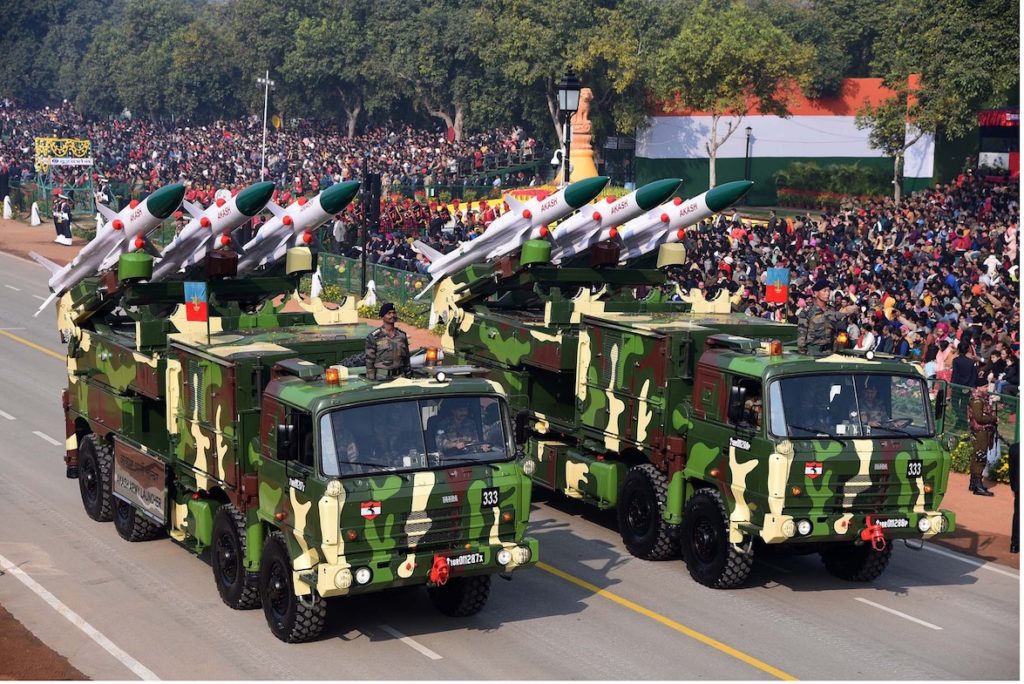
Cultural parade follows the military parade
The military parade is followed by a cultural parade which involves tableaus and cultural performances from various states. These tableaus can depict state festivals, art, historical locations, flora and fauna, development works, personalities, culture, and more. States/UTs and departments send in tableau proposals which are evaluated by an expert committee constituting eminent persons constituted by the Defence Ministry. The committee examines the proposals on the basis of theme, concept, design, and visual impact and makes recommendations. Government departments and ministries also send in tableau proposals demonstrating their contribution towards the nation’s development. For instance, this year’s tableau of Ministry of Labour and Employment will be depicting the labour reforms brought in by the government in the recent past.
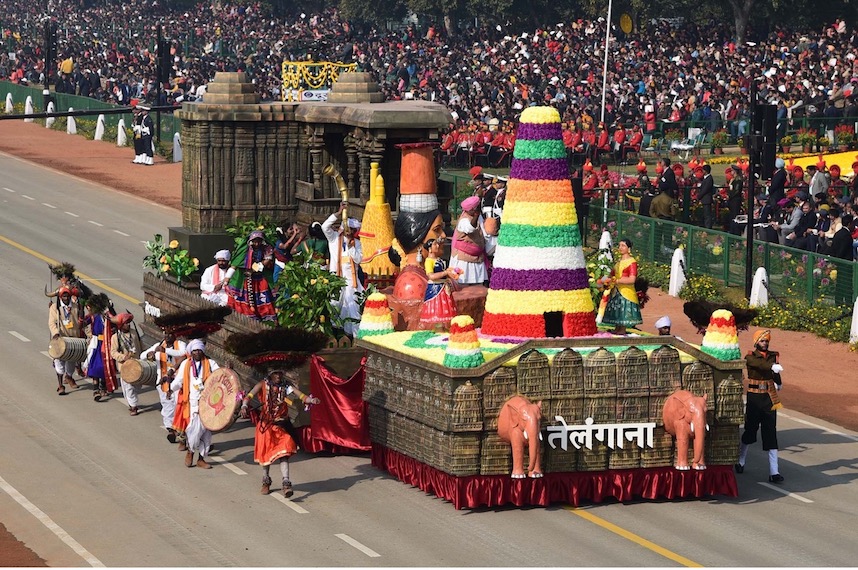
Children who are recipients of the Pradhan Mantri Rashtriya Bal Puraskar award ride past the dais in decorated elephants. The award is presented by the Indian Council for Child Welfare to children who have displayed exceptional bravery.
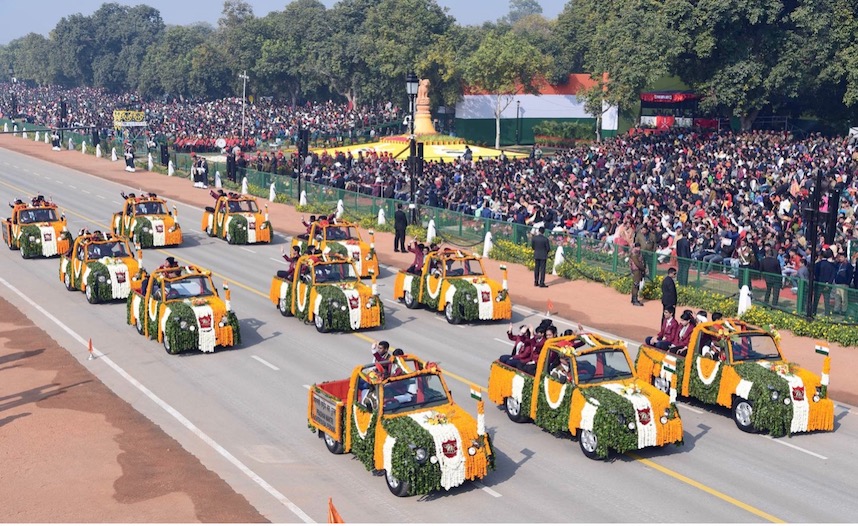
Rafale jets to participate in this year’s parade
The function comes to an end with daredevil motorcycle riding and a flypast by Indian Air Force fighter jets over Rajpath. This year, the Rafale jet will be featured in the ‘Vertical Charlie’ manoeuvre in the flypast by the Indian Air Force for the first time, as per news reports.
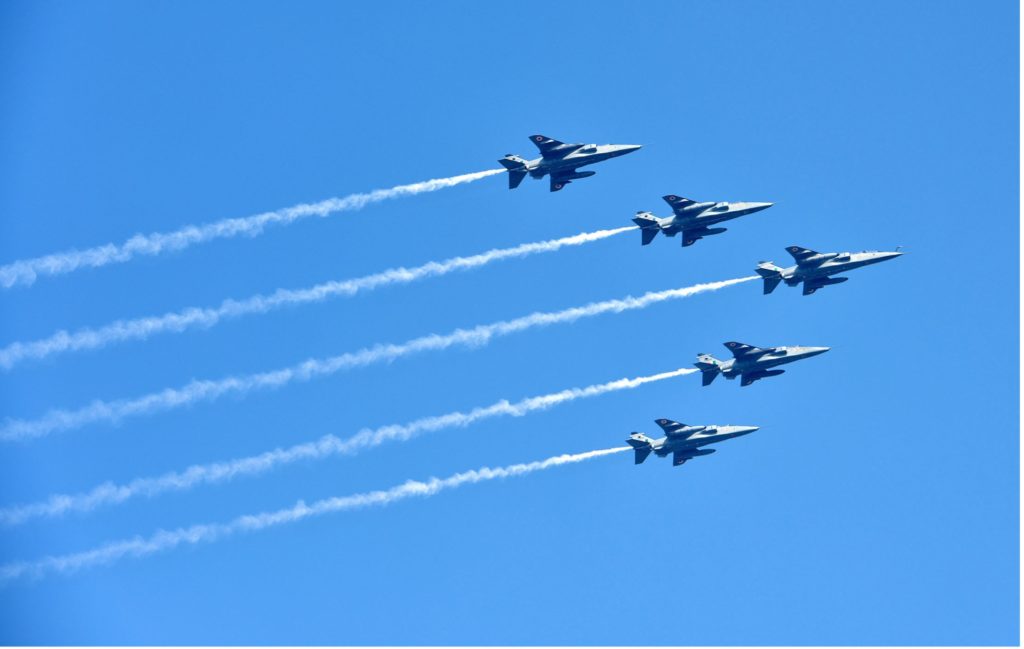
No chief guest on Republic Day for the first time in 50 years
Traditionally, the President of India is accompanied by a foreign Head of State on the Republic Day who is invited as Chief Guest. This year, UK’s Prime Minister Boris Johnson was invited to attend the Republic Day parade. However, he had to cancel his visit due to the changed COVID-19 situation in the UK even though he accepted the invitation. This is the first time in about 50 years that the celebration will be taking place without a chief guest. Prior to this, there were ten occasions when Republic Day was celebrated without a chief guest. A detailed story by Factly on Republic Day chief guests is available here.
Days of events come to a conclusion on 29 January
Other events associated with Republic Day celebrations include the Prime Minister’s rally held on 27 January with performances by NCC cadets and Lok Tarang (National Folk Dance Festival) held between 24 and 29 January. Besides, state governments also hold Republic Day celebrations.
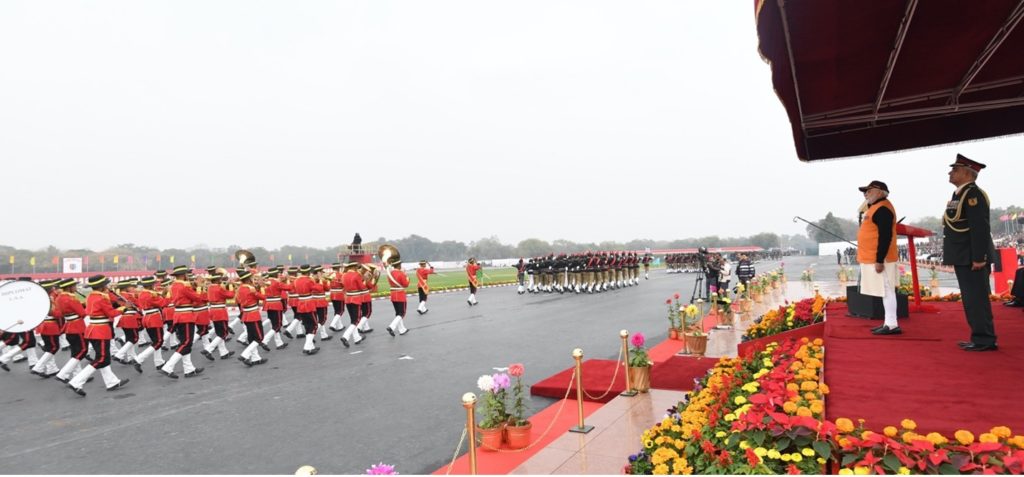
The official conclusion of Republic Day festivities is marked by the Beating the Retreat ceremony conducted on 29 January evening. The ceremony begins with the massed bands of the Indian Army, Navy, and Air Force. Drummers give solo performances and play ‘Abide with Me’ which is said to be Mahatma Gandhi’s favourite. A bugle call for Retreat follows the performance, and the bandmaster marches towards the President requesting to take bands away and announcing the conclusion of the closing ceremony. ‘Saare Jahan Se Achcha’ is then played while the bands march back. The National Flag is then lowered, and National Anthem was sung.
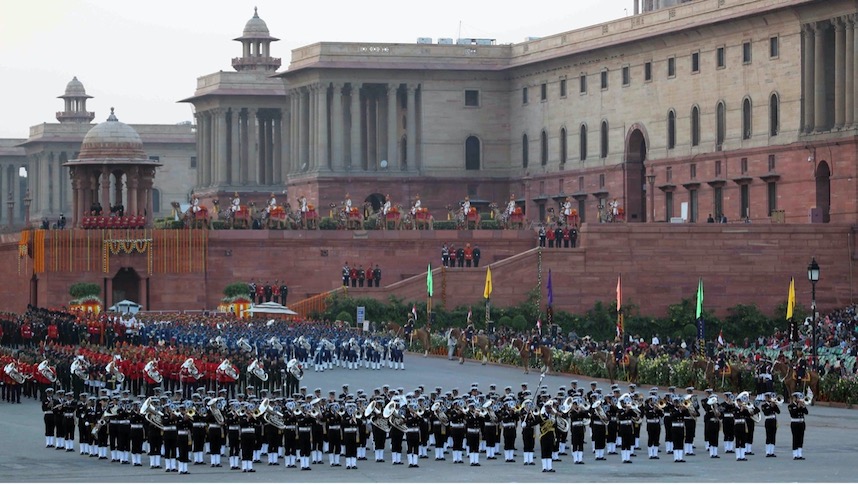
Changes have been brought to the celebration this year due to COVID-19
The pandemic has resulted in modifications to the traditional ceremony this year. As already mentioned, there will be no Chief Guest this year. The parade will end at the National Stadium and not at Red Fort. Further, the contingent strength has been reduced from 144 to 96. There will be no veteran marching contingent. No children aged below 15 years will participate in the parade. The number of participating children and folk artists has been cut down to 400 from 600.
Bangladesh’s military contingent will be participating in parade
Also, this year marks the 50 years of Bangladesh’s independence and establishment of diplomatic relationships with India. A contingent of 122 members from Bangladesh armed forces comprising of soldiers of the Bangladesh Army, sailors of the Bangladesh Navy and Air Warriors of the Bangladesh Air Force, and East Bengal Regiments and Field Artillery Regiments, which fought in the 1971 Bangladesh Liberation war will be participating in the national parade. This is only the third time that a foreign military contingent has been invited to participate in the parade.
Featured Image: Republic Day Parade


